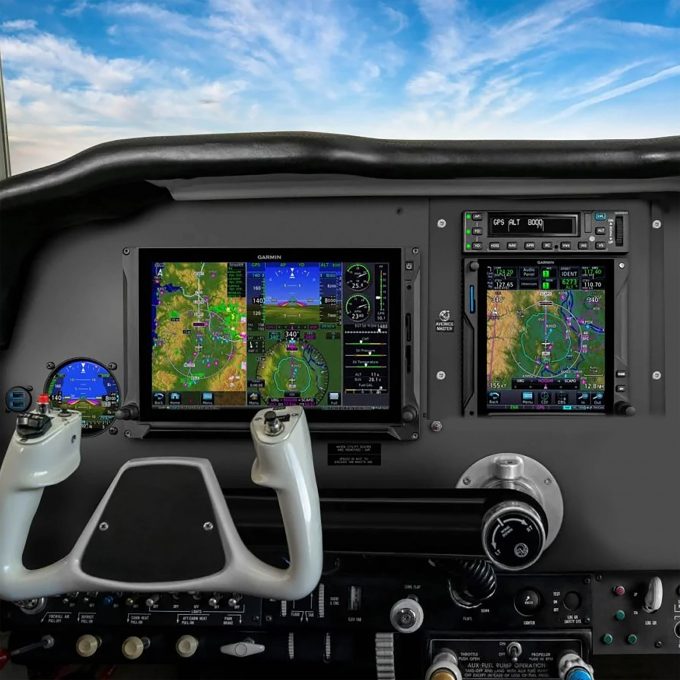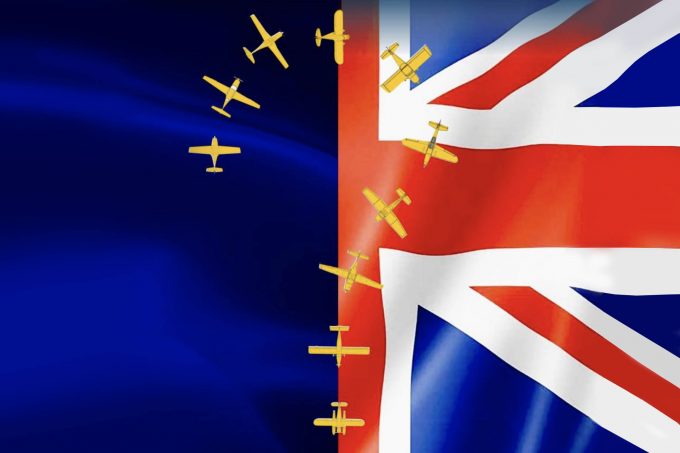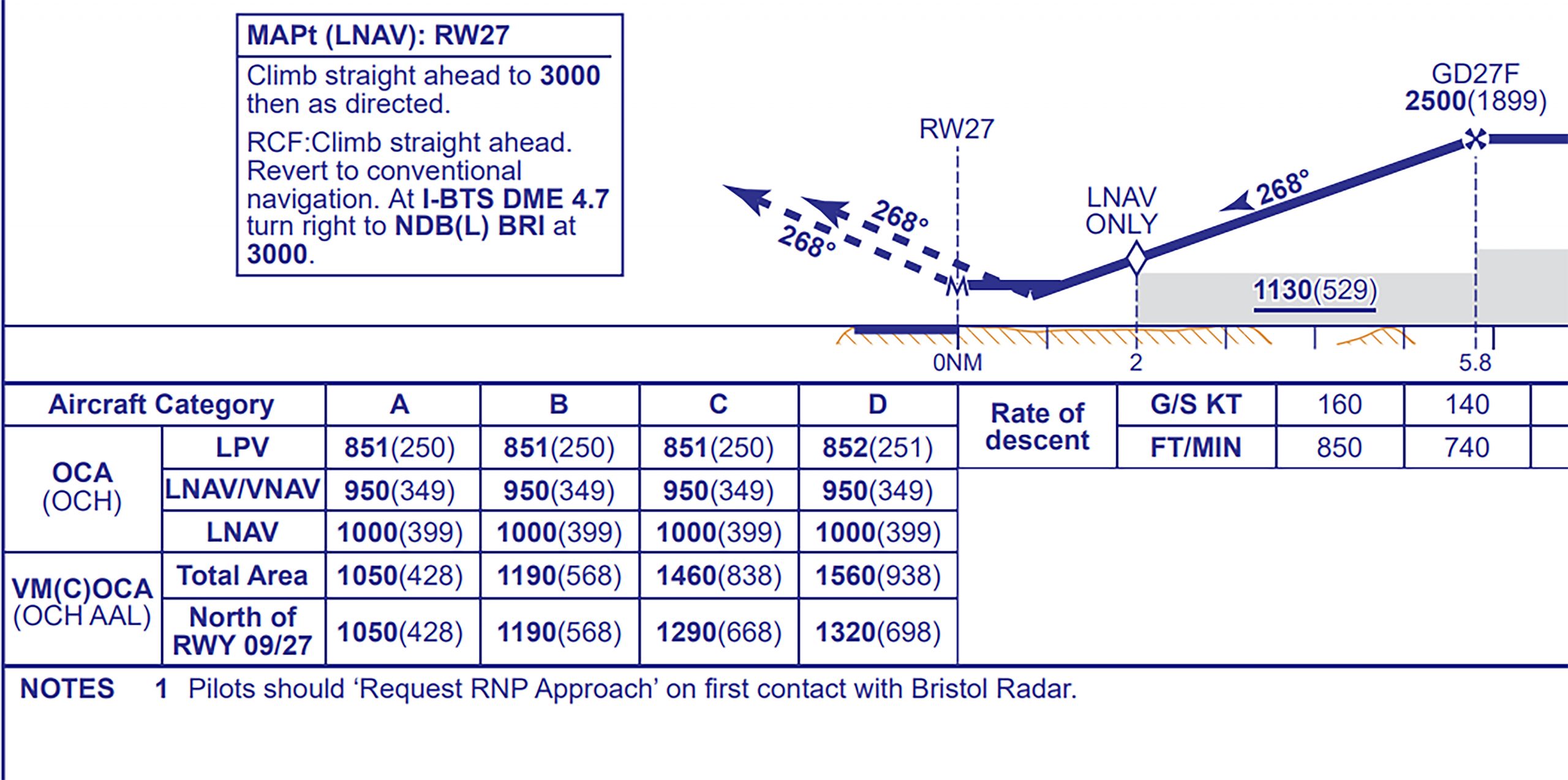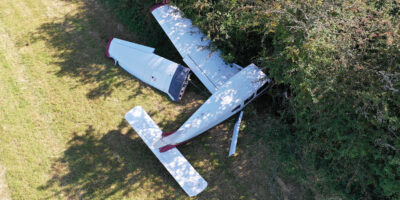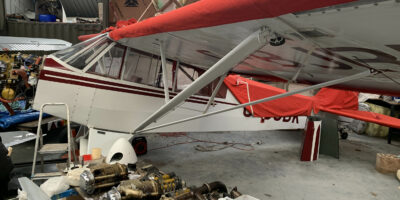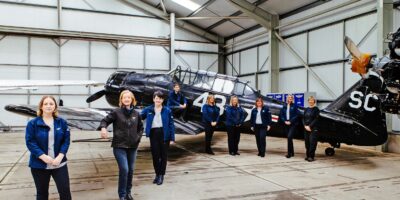We have known about Brexit and leaving EASA for quite a while, but with negotiations continuing (at least as I write this), the lack of a specific deal has brought many questions.
We asked FLYER readers for their questions, and put this to the Civil Aviation Authority. From a General Aviation perspective the questions fell into a couple of areas, licensing and airworthiness, so we’ve grouped those together in this feature.
As you can see, some questions are harder to answer than others, relying as they do on either a negotiated arrangement of some kind, or possibly a future CAA policy if, or when, we begin to diverge from EASA.
The CAA has a specific micro website dealing with what it calls EU-Exit which the Authority is constantly updating. It’s here.
PILOT LICENSING
Peter Gristwood & Darren Weston: As we understand it, LAPL holders can’t fly to France after 31 December. It would appear that French LAPL holders may still be able to fly to the UK. I would guess that over time there will be a bilateral agreement but will that be in time for next summer?
CAA: The LAPL does not conform to the standard PPL in ICAO Annex 1, this is often referred to as a sub-ICAO licence. The UK is currently not expecting any mutual recognition of pilot licences with EASA/EU.
This will mean from the 1 January 2021 a UK CAA issued Part-FCL LAPL:
a. May be used in UK airspace to operate UK (G) registered aircraft within the pilot’s licence privileges.
b. May not be used in UK or European airspace to operate an aircraft registered in another country, unless with the approval of that country or Crown Dependency concerned.
c. May not be used outside UK airspace, including European airspace, unless with the approval of the State or Crown Dependency concerned.
From the 1 January 2021, holders of a LAPL issued by an EASA Member State may not fly an aircraft registered in an EASA Member State in UK airspace.
From the 1 January 2021, holders of a LAPL issued by an EASA Member State may fly a UK (G) registered aircraft in UK airspace for a period of
two years.
Martin Pamphilon: I converted my NPPL(A) to a LAPL(A) in 2018 but retained the NPPL. I can’t use the LAPL to fly in Europe next year but can I fly to France using the NPPL with a valid SSEA rating and Class 2 medical?
CAA: The UK NPPL, like the LAPL, is considered a sub-ICAO licence even if validated with a Class 2 Medical Certificate. The UK is currently not expecting any mutual recognition of pilot licences with EASA/EU.
This will mean from the 1 January 2021 a UK CAA issued NPPL:
a. May be used in UK airspace to operate UK (G) registered aircraft within the pilot’s licence privileges.
b. May not be used in UK or European airspace to operate an aircraft registered in another country, unless with the approval of that country or Crown Dependency concerned.
c. May not be used outside UK airspace, including European airspace, unless with the approval of the State or Crown Dependency concerned.
Ben Chapman: ‘Whether you are an EU citizen or not has nothing to do with LAPL privileges, just the SOLI (State Of Licence Issue – Ed). Any U.K. citizen can apply for SOLI transfer and maintain an EASA LAPL’. Is that true?
CAA: Yes, you can apply to transfer the State Of Licence Issue from one EASA Member State to another. The UK will cease to be an EASA participant from 23:00 on the 31 December 2020, so you must have made an application to transfer to another EASA Member State before that date to continue with the process. You will also need to transfer your medical records to whichever State you have chosen for your licensing.
Nigel Hitchman: You forgot to say that any UK-issued EASA licence holder will have to pay the CAA £77 (private) or £146 (commercial) to get a new CAA licence issued within five years. If it’s an EASA licence issued by another State, it’s worse – £289!
CAA: This is covered in CAP 1986 Consultation on the Scheme of Charges for period 21/22, the consultation closes at midnight on the 4 February 2021. We welcome comments on the proposals.
Phil Parker: I have a LAPL licence. Can someone put it in plain English – can I still fly G-registered Aircraft and will the LAPL medical remain the same, and will the LAPL licence remain a lifetime licence?
CAA: Can I still fly a UK (G) registered aircraft? – Yes, within the privileges of your licence and ratings.
Will the LAPL Medical remain the same? – Yes, for the time being, but the consultation on the future of the regulatory structure for General Aviation may lead to change.
Will the LAPL licence remain a lifetime licence? – Yes, there are no plans to return to limited validity licences. However, there may be a requirement to have your licence reissued in the future.
Slipway: What about those of us who fly N-reg aircraft based in UK on ‘piggyback’ FAA licences? When we converted to EASA, we had to get a new FAA one with ‘Part FCL’ on. I am assuming that we can just use our older ones that were issued on the basis of our CAA licences (which I still hold)?
CAA: There are no plans to change the licence reference number, even when reissuing a UK Part-FCL format licence. Therefore, there should be no reason for the FAA to require a reissued Airmen Certificate in accordance with FAR 61.75.
Danny Boy: What will be the CAA’s stance towards operators of N-reg aircraft and holders of FAA licences?
CAA: From the 1 January 2021, there are no planned changes for the holder of a FAA Airmen Certificate operating a US (N) registered aircraft in UK airspace. The CAA is consulting on the future of the regulatory structure for General Aviation in the UK, so this may lead to changes in the future. In addition, the UK may seek further agreements with the FAA in the future.
Sleeve: For years I held a CAA then an EASA ATPL. When it held no current relevance to my flying, I was cleared for a self-declaration medical. Daft question, but which licence privileges am I now flying on? My ATPL has no expiry date.
CAA: Professional licences such as the ATPL also contain private licence privileges. The key element is the class or type ratings that are being used.
Professional licences and the PPL are issued in accordance with ICAO Annex 1. Whereas the LAPL and the NPPL are not, and as such considered to be sub-ICAO.
Think about what flying you want to do, the types of aircraft you wish to fly and where you would like to fly to. This will direct your choice of licence and medical combination.
For example: if you wish to only conduct private/non-commercial flying, using a UK Part 21 aircraft such as a Piper PA28 and would like to fly in European airspace for trips, then a PPL with a Class 2 Medical Certificate would be the most useful.
Paul Kaye: What about a pilot holding an ex EASA-LAPL who wants to fly an EU-registered (e.g. D-reg) aircraft in the UK? How will that work?
CAA: The LAPL does not conform to the standard PPL in ICAO Annex 1 – this is referred to as a sub-ICAO licence. The UK is currently not expecting any mutual recognition of pilot licences with EASA/EU. This will mean from the 1 January 2021 a UK CAA issued Part-FCL LAPL:
a. May be used in UK airspace to operate UK (G) registered aircraft within the pilot’s licence privileges.
b. May not be used in UK or European airspace to operate an aircraft registered in another country, unless with the approval of that country or Crown Dependency concerned.
c. May not be used outside UK airspace, including European airspace, unless with the approval of the State or Crown Dependency concerned.
Graham Langston: I have an EASA licence but also a UK PPL and a microlight rating. I’ve been trying to get out of the EASA bit because of the Class 2 medical and the cost, and use a self-declared medical. All I need to fly are Permit aircraft and a microlight.”
CAA: This will depend on which State has issued your EASA licence. If the UK CAA is the State of Licence issue then from 1 January 2021, this licence will be a UK CAA issued Part-FCL licence and no longer an EASA recognised licence.
If the EASA licence was issued by another EASA Member State, then it will depend if the licence is a LAPL or a PPL(A).
To fly a UK (G) registered single engine piston aeroplane with a valid Permit to Fly, you can hold either a UK CAA issued Part-FCL LAPL with SEP privileges or PPL(A) with a valid SEP Class Rating. You could also hold a UK PPL(A) with valid SEP or SSEA Class Rating or a UK NPPL(A) with a valid SSEA Class Rating.
To fly microlight aircraft, you can either hold the UK CAA issued Part-FCL LAPL(A) or PPL(A) and complete sufficient differences training with a qualified instructor, or hold a UK PPL(A) and complete sufficient differences training with a qualified instructor or have the Microlight Class Rating endorsed, or hold a UK NPPL(A) and complete the required training to gain the Microlight Class Rating.
The Pilot Medical Declaration (PMD) is valid for both the UK PPL(A) and NPPL when flying UK (G) registered aircraft in UK airspace. At the moment, the PMD is only valid for UK Part-FCL LAPL and PPL until 31 March 2021, when flying UK (G) registered aircraft in UK airspace.
Simon Smith: I have a LAPL(A) with a TMG rating and a LAPL(S). I also hold an NPPL. I have a LAPL medical. I own a share in a Jodel (Permit) and a Ximango (EASA) motor glider. I want to take both of them to France next year.
What’s the most efficient way for me to obtain the licences I need. Is it likely that the LAPLs will be accepted in the future or are they forever worthless in Europe now?
CAA: See above for LAPL answers. With the recent changes to the Sailplane Flight Crew Licensing requirements, the LAPL(S) is now deemed to be a Sailplane Pilots Licence. The SPL with a validating medical certificate – not a Pilot Medical Declaration – is an ICAO Annex 1 compliant licence.
If the motor glider is on the UK (G) register, then the holder of a SPL with a TMG extension and a validating medical certificate may operate this aircraft outside of UK airspace.
In relation to the UK Part-FCL LAPL(A) and NPPL, the CAA is currently not expecting any mutual recognition of pilot licences with EASA/EU.
Max Luke & Jordan Oates: How soon can we expect a clear conversion from NPPL SSEA to UK PPL route?
Having passed after the 2018 deadline for LAPL conversion I’ve been waiting for our exit from EASA for hopefully a sensible routing. I’ve taken all my ground exams in preparation, so am hoping to get the flying section done asap and a full UK PPL issued.
CAA: From the 1 January 2021, there will be some changes to the UK legislation which is being used to implement the EASA regulations into UK law. The exact specific of these changes will be known in the new year. The CAA is consulting on the future of the regulatory structure for General Aviation in the UK, so this may lead to more fundamental changes in the future.
Andrew Cross: When the Brexit transition period comes to the end, will the Pilot-in-Command of a G-registered CofA aircraft (such as a T67 Firefly) be required to hold an aerobatics rating to be able to conduct aerobatics?
Does this answer change if you have both a current UK-issued EASA Part-FCL) licence and a UK PPL Licence?
Does the answer change following full withdrawal from EASA (if this is a later date). Does this answer affect aircraft such as a Chipmunk?
CAA: The EU (Withdrawal) Act 2018, converts existing EU law into UK law, and preserves existing UK laws that implement EU obligations.
This means for holders of UK Part-FCL licences to fly a UK (G) registered UK Part 21 aeroplane and conduct aerobatics, the Pilot in Command must hold an Aerobatics Rating issued in accordance with UK Part-FCL. The T67 is currently a UK Part 21 aeroplane.
At the moment, holders of UK national licences issued under the Air Navigation Order 2016, cannot fly as Pilot in Command in a UK (G) registered Part 21 aeroplane. However, the holder of a UK national licence can fly UK (G) registered non-Part 21 aeroplanes and conduct aerobatics without holding an Aerobatic Rating. The DHC 1 Chipmunk is a non-Part 21 aeroplane.
Irrespective of this, the CAA would urge UK national licence holders to seek appropriate flight and theoretical knowledge training from a suitable qualified instructor before attempting to fly aerobatics.
Martin Brigden-Gwinnutt: I have a LAPL with a PMD while all this Covid-19 stuff is around. I fly a G-reg UK CofA TriPacer. If I get a LAPL medical when all this Covid-19 stuff finishes, can I fly to Europe?
Can I dust off my old UK PPL(A) lifetime licence, get a suitable medical and then fly to Europe and further afield?
CAA: See above for LAPL answers. If you also hold a UK PPL(A), then you can renew the SEP Class Rating endorsed in the licence and with a valid UK Part Med Class 2 Medical Certificate. This combination would be considered ICAO Annex 1 compliant and would allow you to operate the Piper PA22, if holding a valid Certificate of Airworthiness, outside of UK airspace.
You will also need to ensure that the aircraft insurance covers operations outside of the UK.
INSTRUMENT RATINGS
Edward Spurrier: I’m a PPL with an EASA, ex-CAA, licence, and have meant for some time to do the IMC/IR(R). What will Brexit do to this rating and will the CAA adopt and issue the EASA Basic IR in due course?
CAA: The IMC Rating or IR(R) Rating when endorsed onto a UK Part-FCL licence, not including the LAPL(A), will still be available after the end of the transition period.
The implementation of the Basic Instrument Rating (BIR) will be considered by the CAA. If you have an opinion then we would welcome your comments on this in the consultation on the future regulatory structure for General Aviation in the UK.
Andrew Scott: What will happen to the Instrument Rating (Restricted) for those that already hold a valid IR(R) rating, those that have an expired rating (and require revalidation/renewal) and those that wish to obtain an IR(R)?
CAA: Other than updating the syllabus to take advantage of the benefits of Performance Based Navigation (PBN) the IMC/IR(R) Rating will continue as is.
If you are currently training for the rating or need to revalidate or renew the rating, there will be no immediate change. As before, it will only be valid in UK airspace.
Trevor Sexton: I currently fly on my old CAA issued (old brown licence) from 1982. As of March 2020 I was no longer allowed to fly EASA type aircraft under this licence. At the time I did not want to change to a EASA licence only to find come January 2021 I will have to change licences again. As I have mainly been flying Permit aircraft it’s not a problem – however, in the future I may want to fly an EASA type. I heard that come January these type of aircraft will be called Part 21 aircraft. Come 1 January, can I start flying Part 21 aircraft on my old UK issued licence.
CAA: At the moment, UK national licences cannot fly as Pilot in Command (PIC) a UK Part 21 aircraft.
Cliff Nichol: Will the un-expiring IMC Rating that was included within my UK ATPL but removed from my EASA ATPL be returned?
CAA: IMC/IR(R) Rating privileges were not withdrawn from the holders of EASA professional licences – they did not exist originally in the EASA Aircrew Regulations. The UK CAA requested the ability to endorse this rating on UK CAA issued EASA licences only.
The privileges of the IMC Rating are retained in the UK ATPL(A) issued in under the Air Navigation Order. At the moment, UK national licences cannot fly as Pilot in Command (PIC) a UK Part 21 aircraft.
The EU (Withdrawal) Act 2018, converts existing EU law into UK law, and preserves existing UK laws that implement EU obligations. There are no immediate plans to change the UK Part-FCL professional licences to include the privileges of the IR(R) Rating unless specifically endorsed and maintained.
Cessna571: Will my EASA PPL(A) still allow me to fly a CofA PA28? What will I have to do to fly to Le Touquet?
CAA: We would need more information to be certain of an answer but in general, the holder of a UK Part-FCL PPL(A) with a valid SEP Class Rating and valid UK Part Med Class 2 Medical Certificate, can continue to fly as Pilot in Command (PIC) of a UK (G) registered UK Part 21 aeroplanes such as a Piper PA28, with a valid Certificate of Airworthiness, in European airspace. You will need to ensure that the aircraft insurance covers operations outside of the UK.
You would also need to comply with the entry and customs requirements for such a flight. These details can be found in the country’s Aeronautical Information Package (AIP).
PatoWalker: Will the PMD be valid on Part 21 aircraft?
CAA: The Pilot Medical Declaration (PMD) is valid for both the UK PPL(A) and NPPL when flying UK (G) registered non-Part 21 aircraft in UK airspace. At the moment the PMD is only valid for UK Part-FCL LAPL and PPL until 31 March 2021, when flying UK (G) registered UK Part 21 aircraft in UK airspace.
AIRWORTHINESS
Piet Luijken: At this moment we have three DHC-1 Chipmunks here in The Netherlands on G-registration. What is needed to keep the DHC-1 Chipmunk flying in The Netherlands under the CAA UK National Airworthiness Review Certificate?
CAA: From the airworthiness perspective nothing has changed.
Pete M: If my aircraft has a technical problem whilst touring in the EU, it is legal for an EASA licensed engineer to undertake repairs and return it to service?
CAA: The text of the regulation allows, in unforeseen circumstances, the owner to authorise a person with proper qualifications and experience to maintain and release the aircraft. The owner is responsible for getting the maintenance rechecked within seven days and keeping all the records of the maintenance and the qualifications of the person who did the maintenance. If a continuing airworthiness management organisation is involved, the owner must inform them within seven days (or 30-Days in certain circumstances). The full regulation is in Part-145.A.50 (f), M.A.801 (c) or ML.A.801 (c)
Skybolt1: Will BCAR Approvals be valid for design, production (e.g. BCAR A8-21) and maintenance of all aeroplanes (within specific scopes of approval by weight etc), including those previously EASA controlled? Will the Part 66L licence be replicated under national rules?
CAA: The scope of the BCAR approvals is unchanged. Aircraft previously EASA controlled will be known as Part 21 aircraft and their design, production and maintenance will continue under the same regulatory framework but with CAA approval.
JohnM: Are we going to continue with Part ML and related AMP.
CAA: Yes
Jon Roper at Trig Avionics: After Brexit will I always be able to install an EASA certified avionics product in a UK registered aircraft?
CAA: Trig has a CAA approval and should be asking their surveyor.
Sportstarflyer: Can those UK-based aircraft currently operated on an EASA Permit to Fly aircraft be transferred immediately to UK regs, under for example, LAA oversight?
CAA: Aircraft operating on a Part 21 Permit to Fly issued under Part 21.A.701 a)15 (known as an enduring EASA Permit to Fly) will remain on a Part 21 Permit to Fly. The Part 21 Permit to Fly will be issued by the CAA or a Part-CAO Organisation with Permit to Fly issue privileges in accordance with Part-CAO, CAO.A.095 (d).
Flight conditions issued by EASA will be accepted for a period of up to two years after 31 December 2020 providing they remain valid. Continuing Airworthiness Arrangements detailed in the Flight Conditions/Aircraft data sheets shall continue to be applicable.
Any change that invalidates the flight conditions or associated substantiation shall be approved by the CAA. New flight conditions will be issued by the CAA (CAA Form 18b).
Note: The CAA will be responsible for the issue of flight conditions related to the safety of the design and flight conditions not related to the safety of the design.
MISCELLANEOUS
MultiMagic & Peter Kelly: Will we now go back to the ‘clear of cloud and in sight of surface’ VFR rule, instead of SERA ‘1000ft below and 1,500ft horizontally from cloud’ that was forced upon us in April?
CAA: From 1 January 2021, there will be some changes to the UK legislation which is being used to implement the EASA regulations into UK law.
The exact specific of these changes will be known in the new year. The CAA is consulting on the future of the regulatory structure for General Aviation in the UK, so this may lead to more fundamental changes in the future.
SkyDriller: If you currently have a G-reg aeroplane in EASA land, be that on a (currently) EASA CofA or EASA permit, will an EASA maintenance organisation outside the UK continue to be able to sign off on the work, and what licence will be valid to fly it?
The EU (Withdrawal) Act 2018, converts existing EU law into UK law, and preserves existing UK laws that implement EU obligations. This means in relation to the continued airworthiness of the UK (G) registered Part 21 aircraft, your ARC would remain valid until expiry. After the 1 January 2021, you have up to two years to continue to use a CAMO or CAO located in an EASA Member State, after which you would need to ensure that your aircraft is managed by a UK CAA approved CAMO or CAO.
In terms of pilot licence, the UK CAA will be issuing a General Validation, which will validate EASA Part-FCL licences issued by EASA Member States for a period of no more than two years or to the validity of the licence or certificate.
Skydriller: Will the CAA continue to recognise an EASA medical (Class 1 or 2) from outside the UK on a UK issued PPL (currently EASA or original ICAO flavours)?
CAA: From the 1 January 2021, Medical Certificates issued by AMEs approved by an EASA Member State may be recognised by the UK but only if the AME was valid on or before the 31 December 2020 and had not expired, been suspended or revoked by the issuing Competent Authority, when the medical examination was performed.
For each EASA Medical Certificate to be recognised by the UK CAA, all forms and tests relating to the medical, the medical certificate and the current approval certificate of the AME must be sent to the UK CAA Medical Department.
From the 1 January 2023, examinations and assessments performed by EASA AMEs will not be recognised unless a separate AME approval has been granted by the UK CAA to perform UK medicals.



